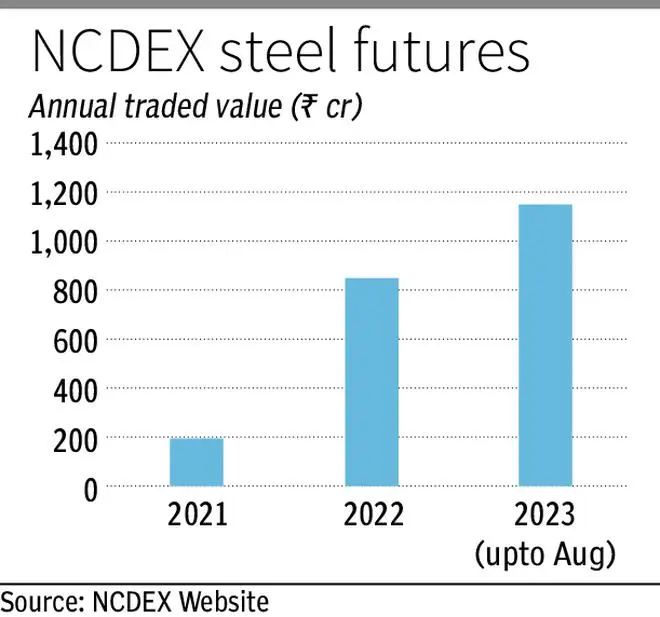India is the second largest producer and consumer of steel after China. Though India remains a distant second to China, India aims to achieve rapid growth in both steel production and consumption.
Initiatives such as Gati-Shakti Master Plan, Make-in-India are expected to increase steel consumption. Making MSMEs operating in the steel sector profitable is important for the steel sector.
The steel industry is dominated by two categories of producers. The first category is large integrated steel producers (ISPs) which utilise iron ore and coking coal to produce primary steel. The other category constituting about 3,000 units, dominated by a large number MSME units, mostly use steel scrap to generate secondary steel. The second category contributes about 65 per cent of total steel production. So India cannot achieve the target of 300MT production by 2031 without a vibrant MSME sector.
MSME woes
However, these MSMEs face plethora of difficulties: stiff competition from ISPs, cheap imports, inferior quality products due to usage of obsolete technology, uncompetitive prices due to high input costs, myriad labour legislations etc.
ISPs being large players are insulated from many of these risks. In fact, ISPs have long-term sales contracts with prices pegged to iron ore and coking coal costs, thus providing natural hedge. Many of these ISPs are vertically integrated having own captive iron ore and coal mines, insuring them from input cost hikes.
MSMEs face both input and output price risk. They buy raw materials from the spot market and sell output on the spot market.
Hence to remain in business, it is imperative that they manage price risk. In this context, the MS-Ingots and MS-Billet futures contracts introduced by NCDEX and the Steel rebar futures set to be introduced by MCX are of significant importance. Since their introduction in 2021, steel futures are doing reasonably well with YOY increase in trading volume.

However, considering the number of domestic steel companies, one would expect a higher trading volume. With an annual business of ₹9-lakh crore for the industry as a whole, derivative trading of ₹1,100 crore constitutes mere 0.14 per cent.
Price risks
Price risks pose an existential threat for most of them. Keeping in mind the myriad challenges these units face, there is need for a policy guideline to nudge, if not make it mandatory, for these units to hedge price risks.
At an individual level, these units may not have the necessary skillset to hedge. So the Steel Ministry may mandate the Indian Steel Association, the apex industry body, to create a unit under its ambit. Maybe a fraction of the CSR fund spent by members of ISA can be ploughed back to this unit. Along with commodity exchanges, this unit can focus on educating and hand holding MSMEs on commodities and financial risk management practices.
At times, even daily MTM margin required for hedging can an onerous for MSMEs. Banks can step in and make it part of the working capital loan. In fact, banks’ internal credit rating models can factor in commodity hedging practices to rate working capital loans.
The Indian steel sector in general and MSMEs in particular have bigger challenges: WTO-related frequent anti-dumping duty levied against Indian steel exports, cheaper steel imports from China, technological upgradation for decarbonization mandate for exports, and many more.
The least they can do is to manage their profitability and survival through a market-based mechanism available at doorstep: hedging at domestic commodity exchanges.
Of course, a little nudge and facilitation by the Ministry of Steel will go a long way.
As Richard Thaler, a Nobel Prize winner in economics, puts it: If you want to encourage someone to do something, make it easy.
The writer is Professor, VGSoM, IIT Kharagpur. Views expressed are personal








Comments
Comments have to be in English, and in full sentences. They cannot be abusive or personal. Please abide by our community guidelines for posting your comments.
We have migrated to a new commenting platform. If you are already a registered user of TheHindu Businessline and logged in, you may continue to engage with our articles. If you do not have an account please register and login to post comments. Users can access their older comments by logging into their accounts on Vuukle.